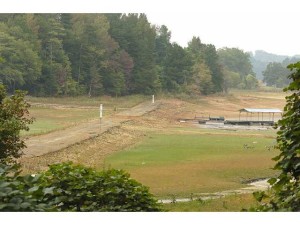
You’ve heard of the Weather Feather, right?
They’re easy to make. Just suspend a feather outside your window and make your own weather forecast.
Here’s how:
• If the feather moves … it’s windy.
• If the feather is wet in the morning, it’s dew. Later in the day … it’s raining.
• If it turns to dust … it’s a drought.
• If the feather is all white … it snowed.
• If the feather is smoking … it’s a heat wave.
• If the feather is missing … run for cover because a twister’s a-comin’!
We don’t need graduate degrees in meteorology to know Lake Lanier suffers from drought conditions. But, just to be sure, we bring you this Drought Monitor Report which is produced in partnership between the National Drought Mitigation Center at the University of Nebraska-Lincoln, the United States Department of Agriculture, and the National Oceanic and Atmospheric Administration.
The Drought Monitor folks “warn us that tracking drought blends science and art. No single definition of drought works for all circumstances, so people rely on drought indices to detect and measure droughts. No single index works under all circumstances, either. (That means ‘So, don’t blame us if we are totally wrong.’) The Drought Monitor is “a synthesis of multiple indices and impacts that represents a consensus of federal and academic scientists.”
Nope, you don’t need a doctorate to predict the weather — but you need one to understand meteorologists.
And now! Ladies and gentlemen!
[insert drumroll here]
We bring you … [insert trumpets here] the Thanksgiving 2012 Drought Monitor Report!
Southeast: Despite cooler-than-normal weather, conditions deteriorated across much of the region, although pockets of heavy rain provided localized relief along the southern North Carolina Coast. A disturbance triggered showers (0.75 to 2 inches) from east-central Georgia into southern North Carolina, but the rain was not heavy enough to afford any substantial drought relief; in fact, the rainfall likely staved off drought expansion, if only for a short time. One exception was the southeastern tip of North Carolina, where amounts of 2 to 4 inches alleviated Abnormal Dryness (D0). From central and southern Alabama into Georgia and interior portions of the Carolinas, rainfall deficits continued to mount (25 to 50 percent of normal over the past 90 days) while streamflows and soil moisture levels fell further. Dry conditions are also increasing across northern Florida, where rain will be needed soon to prevent this portion of the state from slipping into drought.
Translation into English: We’ve had some rain but we need more.
